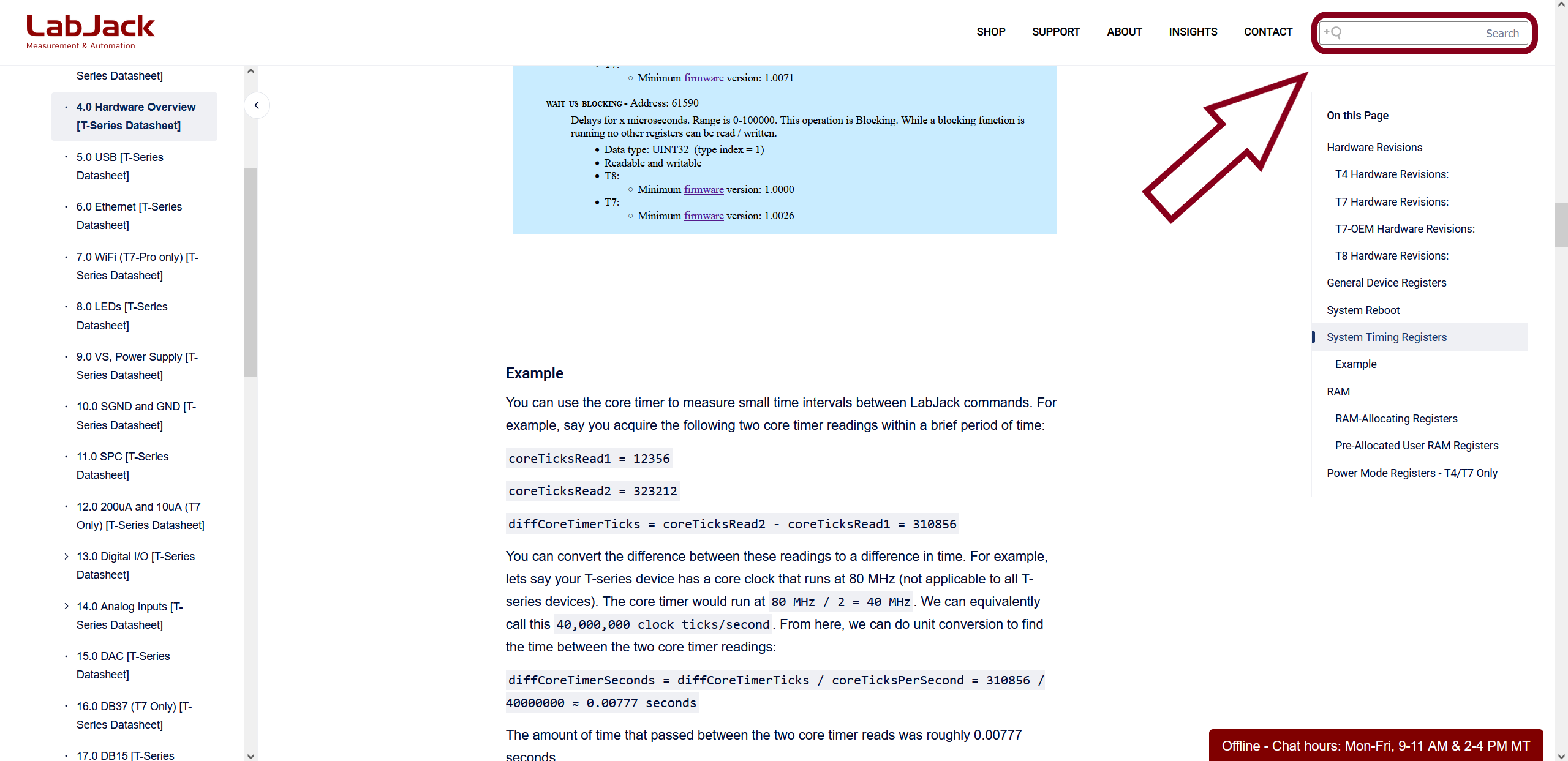Support and Documentation
Getting Started with a New Device? We recommend seeing our device Quickstart Tutorials.
Support Subsections
Free Technical Support
Every LabJack includes lifetime technical support. We are committed to providing quality, responsive support for all our products.
We believe written communication (live chat, email) is the best way to provide the best support. We can take a moment to research/test as needed, we can provide links to the extensive documentation on our site, we get a record of everything that was discussed, and we can easily loop in multiple people as needed.
Live Chat
Hop on a live chat with the engineers who design and develop our products here in Colorado, USA.
We provide real-time chat Monday through Friday from 9-11 am and 2-4 pm, Denver time. Look for the chat bar at the bottom-right of every page.

If a LabJack support engineer is not available for live chat, you can send us an email at support@labjack.com.
Although we prioritize live chat, we almost always respond to emails within 1 business day. If you have been waiting more than 24 hours don't hesitate to contact us via another method.
Contact Us
The contact us page describes all of the methods you can use to reach us.
LabJack Search Bar
LabJack has detailed datasheets, app-notes and support materials. Use the search bar for faster navigation to find exactly what you are looking for.

